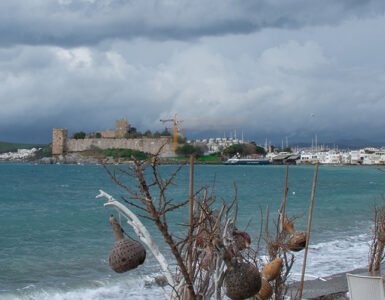The metric system is the most common measuring system in the world, which has measurement units like the litre, the kilometre, and the kilogram to measure volumes, distances, and masses as well as degree Celsius for temperature and heat.
Turkiye officially adapted metric system in 1931. After almost a century, metric measurement units established well in Turkiye. Most of the population don’t know other measuring systems like the imperial system and they will probably fail to understand if you talk about imperial units like ounces or pints.
While in Turkiye, you are going to need measuring things one way or another. If you are only familiar with the imperial system (ounces, inches, pounds, etc.), you will need to know making simple conversation between metric and imperial units for simple tasks like checking the distances from a local map, following the speed limits at the traffic, or even purchasing a bottle of water from a market.
Measuring What is Important
For a traveller, three fundamental measurement units have specific importance for day-to-day tasks: the kilometre for the distance, the kilogram for the mass and the litre for the capacity or volume.
Distances and Lengths
Distance information is the most frequently used data when we travel. If we want to visit nearby towns while in Bodrum, we would like to check the distances between Bodrum and other towns to decide which one to go first, for example. The local sources which we look into will probably be in kilometres and we have to convert it by using the conversion tables below.

If your travel plans include renting a car in Turkiye, on the other hand, the kilometre becomes even more important for your safety.
The displays on the car panel and the numbers on the traffic signs are based on metric system. While the odometer displays the total covered distance in kilometres (km), the speedometer shows the current speed in kilometres per hour (km/h). If there is a temperature information as in the above photo, the unit is always in degree Celsius (°C), not in degree Fahrenheit (°F).
You run across various speed limit signs in the traffic. The most frequent signs are 30 (19 mph), 50 (31 mph), 70 (44 mph), 90 (56 mph), and 120 (75 mph) which are in kilometres per hours (kph).

Both distance and speed measurement units require special emphasis because of the safety reasons. Don’t let the numbers in the metric system distract you when driving.
Volume and Capacity
You will use measurement units extensively regarding volumes and capacities, especially litre, on your Turkiye trip. You need to specify the volume amount when ordering or purchasing any type of fluids like a carton of milk, a cold beer, a bottle of water, or gasoline for your rental car.
Gas
When you rent a car, you need fuel. In the gas stations, unit prices for gas and diesel are given in price per litre.
I checked internet sites of a few car rental companies and found out that Renault Clio is a popular model in economy class. The fuel tank capacity of the Clio is 45 litres (10 imperial gallons). When you stop at a gas station, the gas pump attendant will ask you the quantity of the gas you would like to get. You have to state something like “10 litres please” or “make it full” depending on your need.

Opet is one of the nationwide gas companies and it is a subsidiary of the Koc Holding which is the biggest group in Turkiye. You may have heard their international brands like Arcelik or Beko.
Anyway…
All gas companies have different prices for different cities, depending on the distance between the city and the oil refinery. Up to date price list of Opet for Mugla Province, where Bodrum is located, is here. You can use this information when making your travel budget if it includes renting a car in Turkiye.
Beverages
All alcoholic and non-alcoholic beverages are bottled and sold in different sizes. I have listed the most common bottle capacities for different beverages below. You can convert each capacity by using conversion tables at the end of the page.
- Bottled water: 50 centilitres, 1 litre and 1½ litres.
- Beer: Small beer is 33 centilitres and large beer is 50 centilitres.
- Coke, Sprite, Fanta: 33 centilitres, 50 centilitres and 1 litre.
- Wines: 75 centilitres for both international and Turkish wines.
- Whiskey, Gin, Vodka: 70 centilitres, 1 litre.
- Turkish Raki: Small raki is 35 centilitres, big raki is 70 centilitres.

Measurement units which we often use in Turkiye include another volume measure: cubic metre. It is used mainly while referring to household consumption of water and natural gas.
Weight
If you would like to buy fresh fruits from a grocery or at the Bodrum bazaar, you need to know that one kilogram is about 2,2 pounds. Similarly, most unpackaged food, like vegetables, cheese, butter, or olive, are sold in kilograms.
Most tropical fruits like pineapples and mangos are sold by pieces. If you see the word adet (piece in English) in the tag, it means the price is for one piece. Greeneries like parsley and dill are sold in bundles and when you see the word demet on the tag, it is the bundle price.

Temperature
In Turkiye, the temperature is measured in terms of a degree Celsius (°C) which is a unit developed by a Swedish astronomer, Anders Celsius at the beginning of the 18th century.
As in the weather in Bodrum, or on your car panel display, all temperatures are in °C. If you prefer Fahrenheit instead, there is a simple conversion formula you can use. The formula may be simple, but it is still a formula which may require a calculator to solve.
To help you avoid using a calculator in your trip, I have prepared a visual for you to give you a general idea about the relation between two different temperature measurement units. I hope you will find it useful.

Now the formula…
When you need to find out the Fahrenheit equivalent of a given temperature in terms of Celsius, the formula is:
F = (C * 1,8) + 32
The same formula is also used to determine the Celsius equivalent of a Fahrenheit unit. In this case the formula becomes:
C = 0,56 * (F-32)
In the above formula C stands for degree Celsius and F stands for degree Fahrenheit.
Metric and Imperial Measurement Units
Most of the time, the above topics are all you will need when travelling around Turkiye. Still, if you want to learn more, the conversion factors between imperial and metric measurement units are given on below tables.
Conversion from Imperial to Metric Units
Did you know the imperial system is officially accepted by only three countries in the world? Those countries are the United States, Liberia, and Myanmar.
Linear Measurement (Length / Distance)
| Imperial | Metric |
|---|---|
| 1 inch | 2.54 centimetres |
| 1 foot (=12 inches) | 0.3048 metre |
| 1 yard (=3 feet) | 0.9144 metre |
| 1 (statute) mile (=1760 yards) | 1.6093 kilometres |
| 1 (nautical) mile (=1.150779 miles) | 1.852 kilometres |
Square Measurement (Area)
| Imperial | Metric |
|---|---|
| 1 square inch | 6.4516 square centimetres |
| 1 square foot (=144 square inches) | 0.0929 square metres |
| 1 square yard (=9 square feet) | 0.8361 square metres |
| 1 acre (=4840 square yards) | 4,046.856 square metres |
| 1 square mile (=640 acres) | 2.590 square kilometres |
Cubic Measurement (Volume)
| Imperial | Metric |
|---|---|
| 1 cubic inch | 16.4 cubic centimetres |
| 1 cubic foot (=1728 cubic inches) | 0.0283 cubic metres |
| 1 cubic yard (=27 cubic feet) | 0.765 cubic metres |
Capacity Measurement (Volume)
| Imperial | Metric |
|---|---|
| 1 (imperial) fl. oz. (=1/20 imperial pint) | 28.41 millilitres |
| 1 (US liquid) fl. oz. (=1/16 US pint) | 29.57 millilitres |
| 1 (imperial) gill (=1/4 imperial pint) | 142.07 millilitres |
| 1 (US liquid) gill (=1/4 US pint) | 118.29 millilitres |
| 1 (imperial) pint (=20 fl. imperial oz.) | 568.26 millilitres |
| 1 (US liquid) pint (=16 fl. US oz.) | 473.18 millilitres |
| 1 (US dry) pint (=1/2 quart) | 550.61 millilitres |
| 1 (imperial) gallon (=4 quarts) | 4.546 litres |
| 1 (US liquid) gallon (=4 quarts) | 3.785 litres |
| 1 (imperial) peck (=2 gallons) | 9.092 litres |
| 1 (US dry) peck (=8 quarts) | 8.810 litres |
| 1 (imperial) bushel (=4 pecks) | 36.369 litres |
| 1 (US dry) bushel (=4 pecks) | 35.239 litres |
Mass Measurement (Weight)
| Imperial | Metric |
|---|---|
| 1 grain | 0.065 gram |
| 1 dram | 1.772 grams |
| 1 ounce (=16 drams) | 28.35 grams |
| 1 pound (=16 ounces =7000 grains) | 0.45359237 kilogram |
| 1 stone (=14 pounds) | 6.35 kilograms |
| 1 quarter (=2 stones) | 12.70 kilograms |
| 1 hundredweight (=4 quarters =112 lb.) | 50.80 kilograms |
| 1 (long) ton (=2240 lbs) | 1.016 tonnes |
| 1 (short) ton (=2,000 lbs) | 0.907 tonne |
Conversion from Metric to Imperial Units
Most countries in the world uses metric system for its simplicity. An interesting fact is that the second – as a time unit – is one of the fundamental measurement units of the metric system.
Linear Measurement (Length / Distance)
| Metric | Imperial |
|---|---|
| 1 millimetre | 0.0394 inch |
| 1 centimetre (=10 mm) | 0.3937 inch |
| 1 decimetre (=10 cm) | 3.937 inches |
| 1 metre (=100 cm) | 1.0936 yards |
| 1 decametre (=10 m) | 10.936 yards |
| 1 hectometre (=100 m) | 109.36 yards |
| 1 kilometre (=1000 m) | 0.6214 miles |
Square Measurement (Area)
| Metric | Imperial |
|---|---|
| 1 square centimetre | 0,1550 square inch |
| 1 square metre (=10,000 square centimetres) | 1,1960 square yards |
| 1 are (=100 square metres) | 119,60 square yards |
| 1 hectare (=100 ares) | 2,4711 acres |
| 1 square kilometre (=100 hectares) | 0,3861 square mile |
Cubic Measurement (Volume)
| Metric | Imperial |
|---|---|
| 1 cubic centimetre | 0.0610 cubic inch |
| 1 cubic metre (one million cubic centimetres) | 1.308 cubic yards |
Capacity Measurement (Volume)
| Metric | Imperial |
|---|---|
| 1 millilitre | 0.002 (imperial) pint |
| 1 centilitre (=10 millilitres) | 0.018 pint |
| 1 decilitre (=100 millilitres) | 0.176 pint |
| 1 litre (=1000 millilitres) | 1.76 pints |
| 1 decalitre (=10 litres) | 2.20 (imperial) gallons |
| 1 hectolitre (=100 litres) | 2.75 (imperial) bushels |
Mass Measurement (Weight)
| Metric | Imperial |
|---|---|
| 1 milligram | 0.015 grain |
| 1 centigram (=10 milligrams) | 0.154 grain |
| 1 decigram (=100 milligrams) | 1.543 grain |
| 1 gram (=1000 milligrams) | 15.43 grain |
| 1 decagram (=10 grams) | 5.64 drams |
| 1 hectogram (=100 grams) | 3.527 ounces |
| 1 kilogram (=1000 grams) | 2.205 pounds |
| 1 tonne (=1000 kilograms) | 0.984 (long) ton |
















Best view i have ever seen !
Thank you so much!